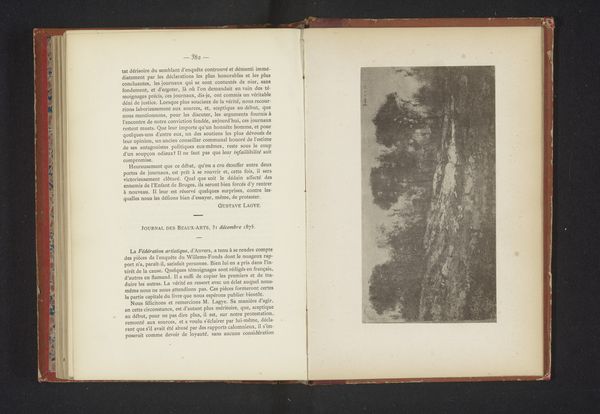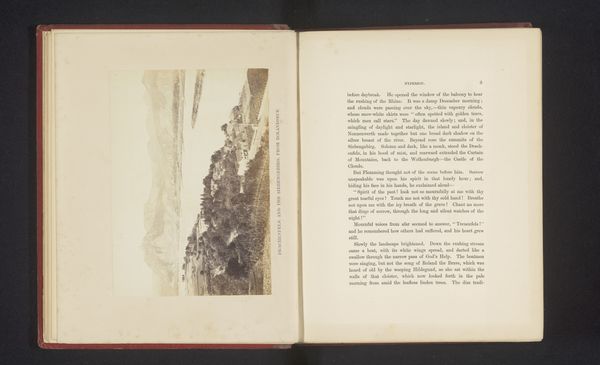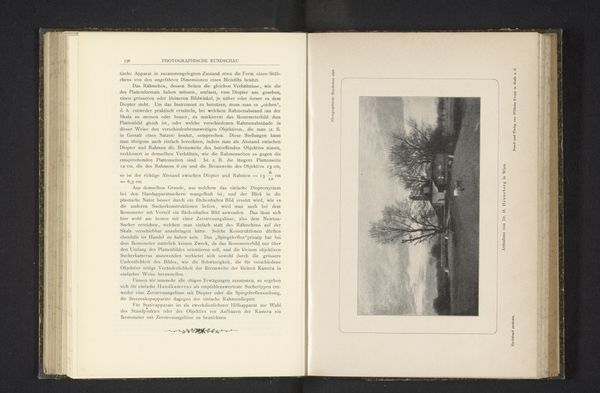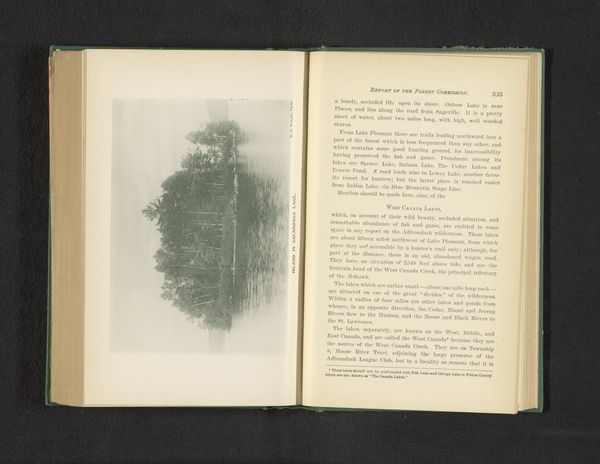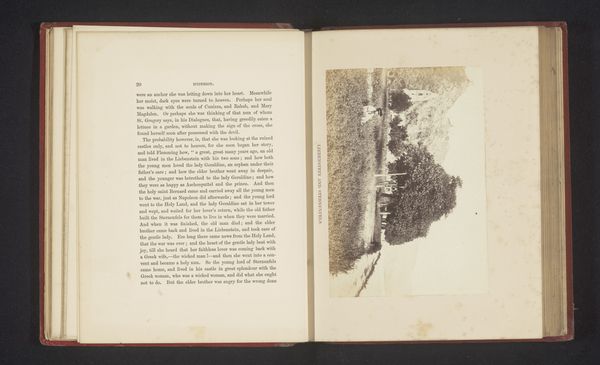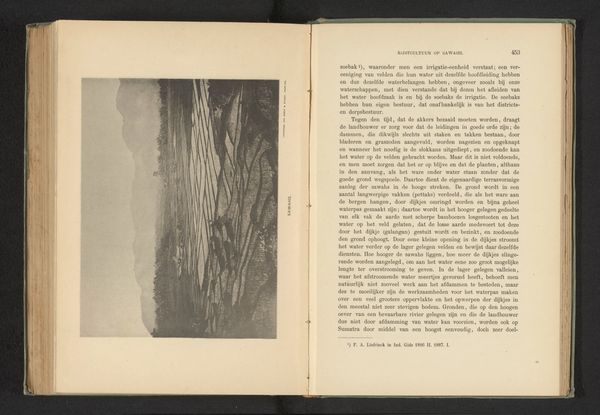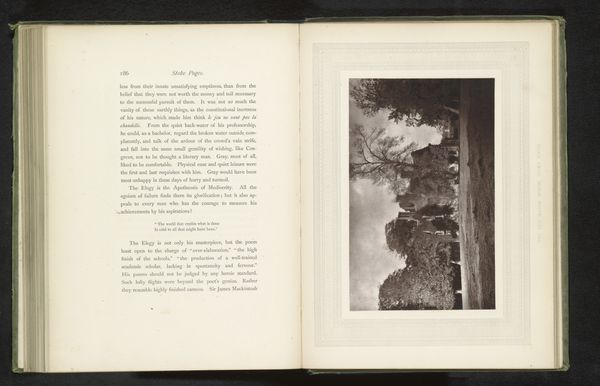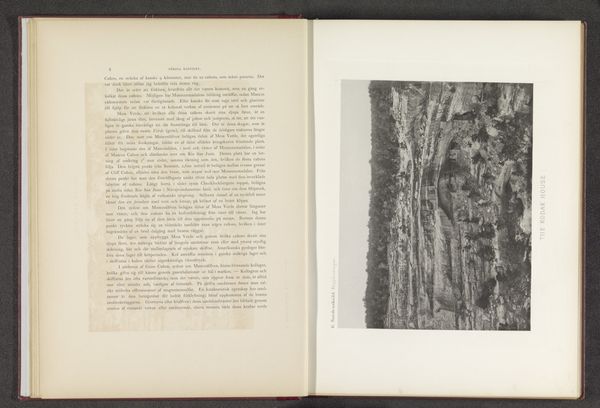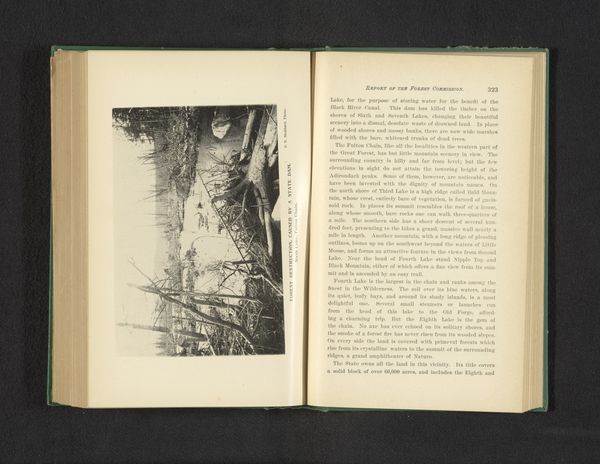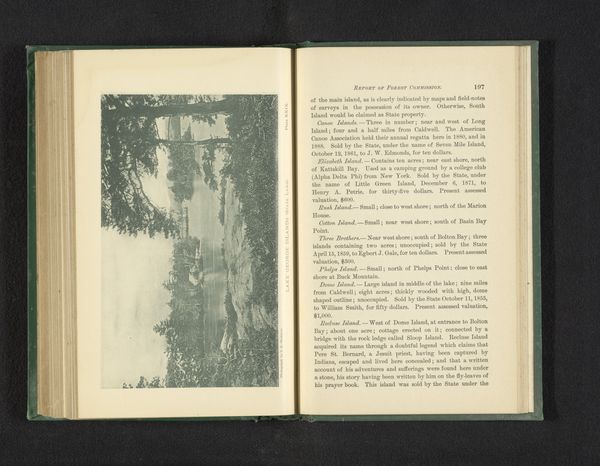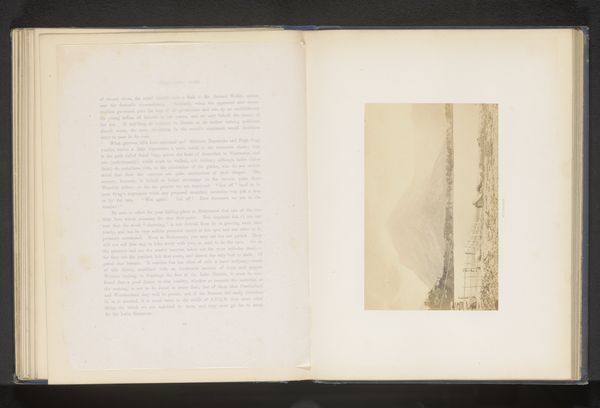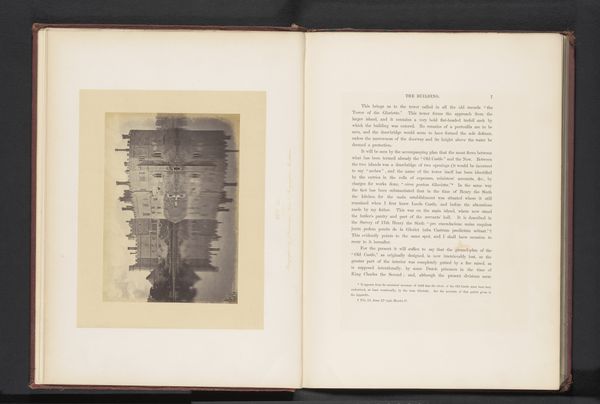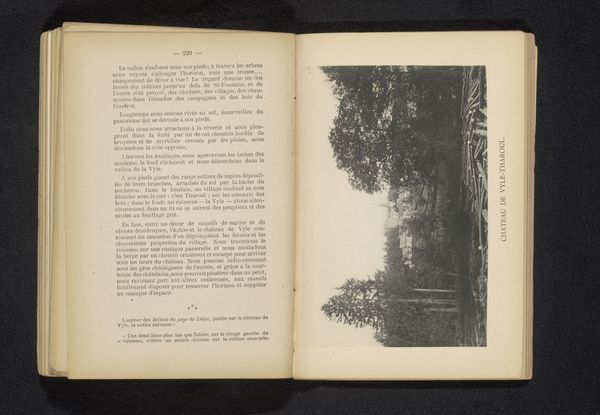
Dimensions: height 100 mm, width 140 mm
Copyright: Rijks Museum: Open Domain
Editor: Here we have Francis Frith’s “Gezicht over de Theems bij Eton College,” or "View over the Thames at Eton College", created before 1867. It's an albumen print, so a photograph, but it reminds me of a painting with its soft focus. What kind of context would have shaped its production? Curator: Considering the time period, this photograph reflects the burgeoning interest in landscape as a representation of national identity and power. Eton College, an elite institution, stands as a symbol of British privilege and tradition. Frith, through the lens, essentially packages this idea for public consumption. Does the print suggest anything to you about who would be buying and viewing this work? Editor: It seems geared towards people who would admire Eton or aspire to its ideals… Maybe the rising middle class looking to emulate the aristocracy? Curator: Precisely. The distribution of such images contributes to a broader cultural narrative – it reinforces social hierarchies. Note how Frith's technique, using albumen, elevates photography beyond simple documentation, lending it an artistic quality deemed worthy of display in homes and galleries, thus contributing to the medium's legitimization as 'art'. Who decides what makes something worthy of display is quite telling, isn’t it? Editor: So, the medium and subject combine to communicate social values to a specific audience... Does that impact its merit as art? Curator: That’s an interesting question. The 'artistic merit' becomes inseparable from its social function. Analyzing the cultural work that this image performs – how it shapes perception and reinforces power dynamics - allows us to understand its importance historically. The politics of imagery are never neutral. Editor: This photo now feels so much more charged with meaning than I initially thought! It’s fascinating how historical context reveals those layers. Curator: Indeed! It’s about moving beyond surface appearances and questioning what exactly it communicates about society at the time.
Comments
No comments
Be the first to comment and join the conversation on the ultimate creative platform.

